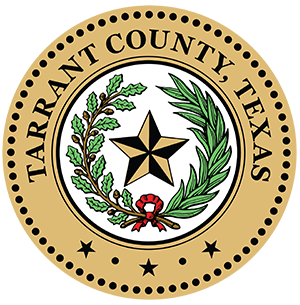Definitions
Definitions
According to the National Institutes of Health (NIH), health disparities are "the differences in the incidence, prevalence, mortality, burden of diseases and other adverse health conditions that exist among specific population groups in the United States." Being able to do this effectively will require the following:
- Assessing the community;
- Researching best practices and policies;
- Partnering with individuals and groups affected by health disparities;
- Collaborating with local, state, national and federal organizations to enhance resources and to develop successful strategies;
- Training Tarrant County Public Health staff and the community on health equity issues; and
- Developing, implementing and evaluating programs and activities to support a broad-based health equity movement.
Due to the complexities involved in health equity and discussions of disparities, here is a listing of the definitions used for purposes of promoting a better understanding of the issues involved.
Culture - An integrated pattern of learned beliefs and behaviors that can be shared among groups (i.e. thoughts, values, physical and mental abilities, socioeconomic status, etc.). (Sources: Robins et al., 1998; Betancourt et al., 2002).
Cultural Competence - Practices, values and behaviors that enable effective cross-cultural interactions among diverse communities. Cultural competence is the integration and transformation of knowledge about individuals and groups of people into specific standards, policies, practices and attitudes used in appropriate cultural settings to increase the quality of services; thereby producing better outcomes. Competence implies having the capacity to function effectively as an individual and an organization within the context of the cultural beliefs, behaviors, and needs presented by consumers and their communities.
Source: National Prevention Information Network
Health Disparities - According to the U.S. Centers for Disease Control and Prevention, health disparities are preventable differences in the burden of disease, injury, violence or opportunities to achieve optimal health experienced by socially disadvantaged populations.
Health disparities result from multiple factors, including:
- Poverty
- Environmental threats
- Inadequate access to health care
- Individual and behavioral factors
- Educational inequalities
Health disparities are inequitable and directly related to the historical and current unequal distribution of social, political, economic and environmental resources. Health disparities and inequities can be reduced by addressing the social determinants of health.
Health Equity - Healthy People 2030 defines health equity as “the attainment of the highest level of health for all people. Achieving health equity requires valuing everyone equally with focused and ongoing societal efforts to address avoidable inequalities, historical and contemporary injustices, and the elimination of health and health care disparities.”
Health Inequalities - The measurable differences and disparities in health status and health outcomes of individuals and groups of people.
Source: U.S. Centers for Disease Control and Prevention
According to the World Health Organization (2018), health inequities are differences in health status or in the distribution of health resources between different population groups, arising from the social conditions in which people are born, grow, live, work and age.
Health Literacy - Healthy People 2030 addresses both personal and organizational health literacy and provides the following definitions:
- Personal health literacy is the degree to which individuals have the ability to find, understand and use information and services to inform health-related decisions and actions for themselves and others.
- Organizational health literacy is the degree to which organizations equitably enable individuals to find, understand and use information and services to inform health-related decisions and actions for themselves and others.
Linguistic Competence - The capacity of an organization and its personnel to communicate effectively, and convey information in a manner that is easily understood by diverse audiences including persons of limited English proficiency, those who have low literacy skills or are not literate, and individuals with disabilities. The organization must have policy, structures, practices and dedicated resources to support this capacity.
Source: Rose, 2009
Social Determinants of Health – Social determinants of health are the conditions in the environments where people are born, live, learn, work, play, worship and age that affect a wide range of health, functioning and quality-of-life outcomes and risks.
Source: Healthy People 2030
Social Justice - Justice in terms of distribution of wealth, opportunities and privileges within a society (New Oxford American Dictionary) promoting a just society by challenging injustice and valuing diversity.
Source: National Association of City and County Health Officials (NACCHO).

 TARRANT COUNTY, TX
TARRANT COUNTY, TX

 Public Health
Public Health